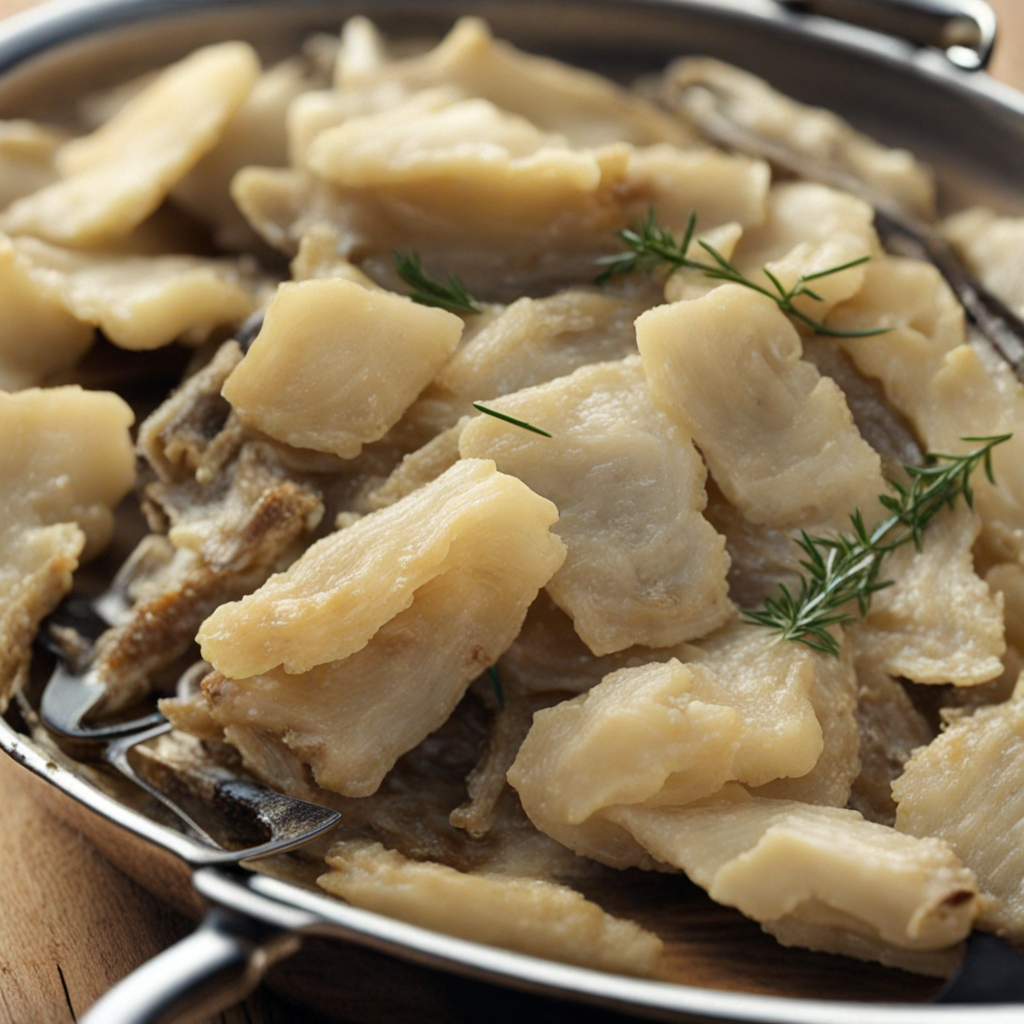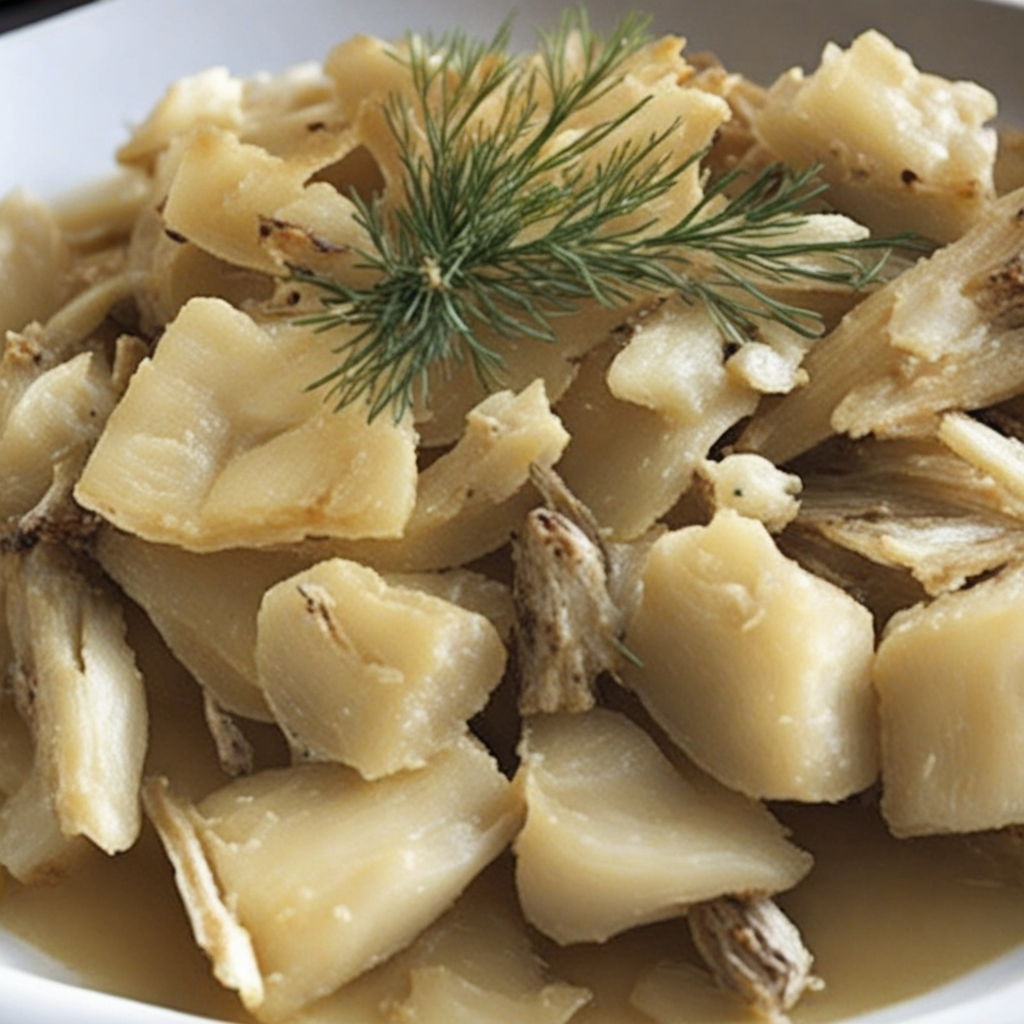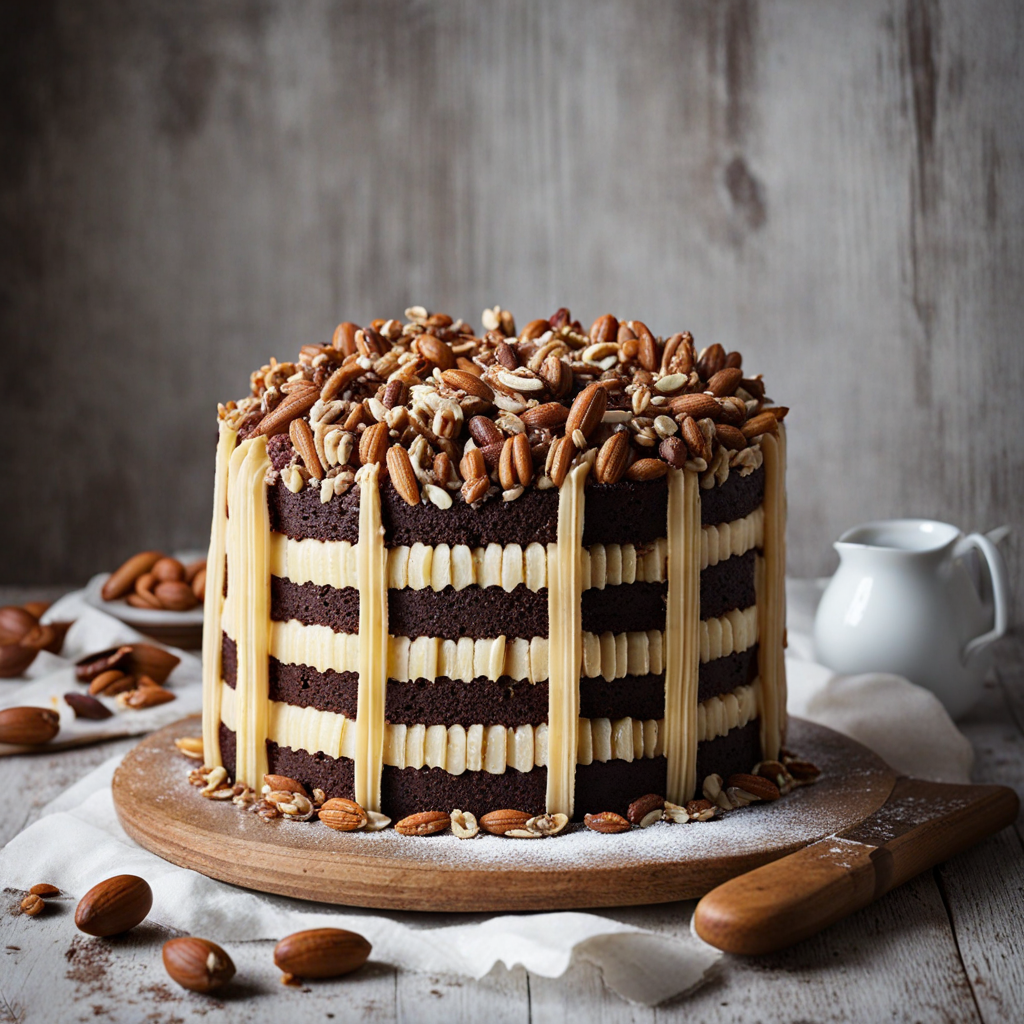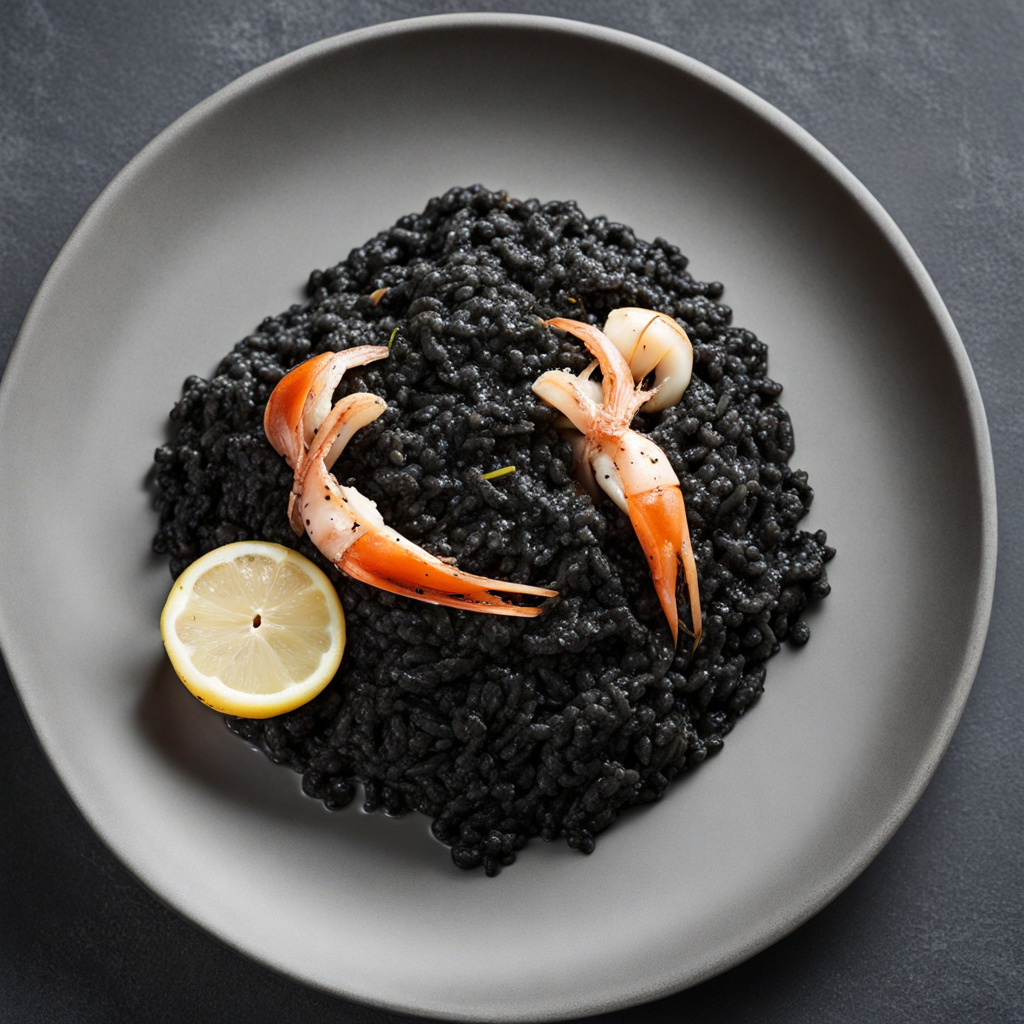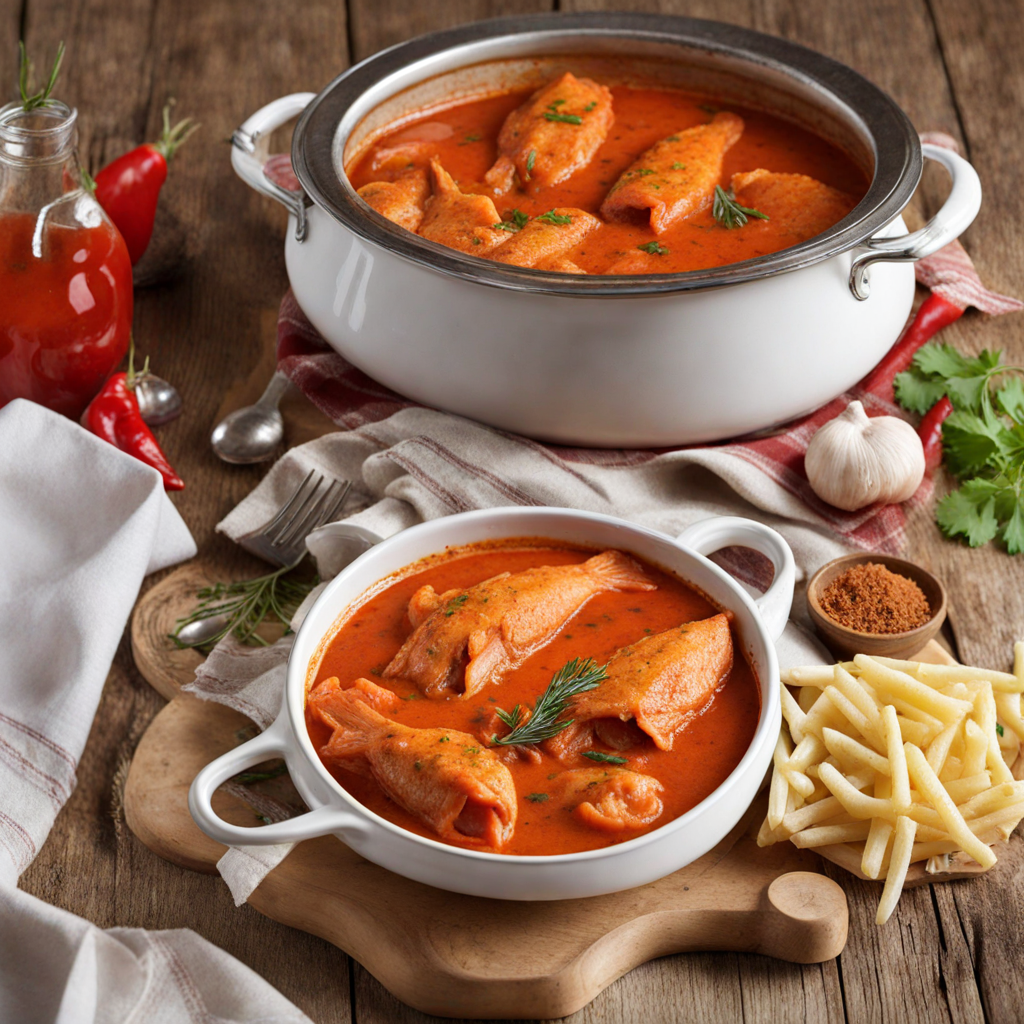Bakalar
Bakalar is a traditional Croatian dish that showcases the culinary heritage of the Adriatic coast. At its core, Bakalar is made from dried cod, which is a staple in many coastal regions, particularly during the Lenten season. The process of preparing Bakalar involves soaking the salted fish for several days to rehydrate it, allowing the flavors to develop. Once rehydrated, the cod is typically cooked in a simple yet flavorful manner, often simmered with olive oil, garlic, and a medley of vegetables such as potatoes and onions. The result is a dish that is rich in umami, with a delightful balance of saltiness and the natural sweetness of the vegetables. What sets Bakalar apart is its versatility and the regional variations that can be found across Croatia. In some areas, it may be served with a tomato-based sauce, while in others, it might be accompanied by olives and capers to enhance its briny flavor. The texture of the cod, once cooked, is flaky and tender, making it a comforting dish that warms the soul. This dish is often enjoyed during festive occasions, particularly on Christmas Eve, and is a reflection of the local customs and the Croatian affinity for seafood. Pairing Bakalar with a glass of local white wine, such as Malvazija, enhances the dining experience, allowing the complex flavors of the dish to shine through. The combination of the savory fish and the aromatic components creates a mouthwatering experience that invites diners to savor each bite. For those looking to explore Croatian cuisine, Bakalar is not just a meal; it’s a journey into the heart of Croatian culture and tradition, making it a must-try for any adventurous food lover.
How It Became This Dish
The History of Bakalar: A Culinary Treasure of Croatia Bakalar, a traditional dish of dried cod, holds a revered place in Croatian culinary history, especially along the Adriatic coast. This dish is not just a staple of the Croatian diet; it is a symbol of cultural identity, reflecting centuries of maritime tradition, religious practices, and regional variations. The story of Bakalar is a fascinating journey through time, encompassing its origins, cultural significance, and evolution. #### Origins The roots of Bakalar can be traced back to the fishing communities of Northern Europe, particularly the North Atlantic. Cod, a fish abundant in these waters, was historically an essential source of protein for coastal populations. The practice of drying and salting fish dates back to ancient civilizations, with the preservation process allowing communities to survive harsh winters and lean times. As trade routes expanded, dried cod became a sought-after commodity, crossing borders and oceans. In Croatia, Bakalar emerged as a staple food among the coastal populations, especially in Dalmatia and Istria. The dish became particularly popular among the fishermen and their families, who relied on the sea for sustenance. The word "bakalar" itself derives from the Italian "baccalà," which refers to dried and salted cod, highlighting the culinary exchanges that shaped Croatian cuisine. #### Cultural Significance Bakalar is particularly associated with the tradition of fasting during Lent and Advent in the Catholic Church. Historically, on Christmas Eve, many Croatian families would abstain from meat, adhering to the practice of consuming fish instead. It is during this time that Bakalar is most commonly prepared and served, often accompanied by simple side dishes such as boiled potatoes or polenta. The dish embodies the spirit of sacrifice and reflection that characterizes these religious observances. In Croatian culture, Bakalar is more than just a meal; it is a symbol of family gatherings and celebrations. The preparation of this dish often involves the whole family, with the drying and soaking of the cod becoming a communal activity. Families pass down their recipes and techniques through generations, preserving not only the flavors but also the stories and memories associated with them. This connection to family and tradition reinforces Bakalar's significance in Croatian culinary heritage. #### Development Over Time As Croatian society evolved, so too did the preparation and consumption of Bakalar. In the early 20th century, as the country underwent political and social changes, the dish began to reflect regional variations influenced by local ingredients and customs. In coastal areas, Bakalar is often prepared with olive oil, garlic, and parsley, showcasing the Mediterranean flavors that define much of Croatian cuisine. In contrast, inland variations might incorporate spices and vegetables that reflect the heartier agricultural traditions of the region. The globalization of food has also played a role in the evolution of Bakalar. In recent years, there has been a resurgence of interest in traditional and regional cuisines, with chefs and home cooks alike exploring the rich history of dishes like Bakalar. This renewed appreciation has led to innovative interpretations, with contemporary chefs experimenting with different cooking techniques and flavor profiles while still respecting the dish's origins. One notable adaptation has been the incorporation of Bakalar into culinary tourism. As Croatia's popularity as a travel destination has grown, so too has interest in its traditional foods. Tourists often seek out authentic experiences, and Bakalar has become a highlight in many coastal restaurants, where chefs offer their unique takes on the classic dish. This exposure has not only increased awareness of Bakalar but has also contributed to its preservation as a vital part of Croatian gastronomy. #### Recipes and Preparation The traditional preparation of Bakalar involves several steps that highlight the dish's humble origins. The process typically begins with soaking the dried cod in water for 24 to 48 hours, allowing it to rehydrate and soften. The soaking water is changed multiple times to remove excess salt. Once the cod is ready, it is usually boiled or steamed, then flaked into pieces. A classic way to serve Bakalar is "Bakalar na bijelo," or white Bakalar, which involves sautéing the fish with olive oil, garlic, and parsley. This dish is often paired with polenta, boiled potatoes, or a simple salad. Another popular version is "Bakalar na crveno," or red Bakalar, which incorporates tomato sauce and spices, reflecting the influences of Italian and Mediterranean cooking. In addition to its traditional preparations, Bakalar has inspired various modern interpretations. Chefs today might serve it alongside creative garnishes or in fusion dishes, showcasing the versatility of this historical ingredient. #### Conclusion Bakalar is more than just a dish; it is a testament to Croatia's rich maritime heritage and cultural identity. Its origins as a humble source of sustenance have transformed into a cherished culinary tradition that brings families together during significant religious observances and festive occasions. As Bakalar continues to evolve in contemporary cuisine, it remains a vital link to the past, a reflection of the community's values, and an enduring symbol of Croatian identity. From its roots in the fishing villages of the Adriatic to its place on the tables of families across Croatia and beyond, Bakalar embodies the flavors, traditions, and stories that make Croatian cuisine uniquely its own. In every bite, one can taste the history, the culture, and the love that generations have poured into this beloved dish. As the world continues to discover and celebrate Croatian gastronomy, Bakalar stands as a delicious reminder of the power of food to connect us to our heritage and to each other.
You may like
Discover local flavors from Croatia


